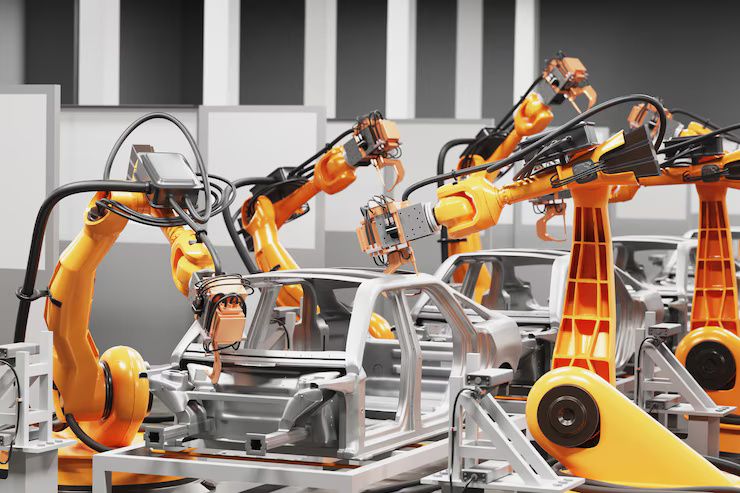Discover the Role of Industrial Robots in Automation: An Introduction with Expert Tips
Industrial robots are programmable machines designed to perform tasks in manufacturing and industrial environments. These tasks include welding, assembling, packaging, painting, and handling heavy materials. Unlike consumer robots or service bots, industrial robots are typically large, powerful, and built for repetitive or dangerous work that would be risky or inefficient for humans.
The concept of automation through robotics emerged in the mid-20th century, with significant advances taking place in the 1980s and beyond. As technology matured, these robots became more affordable, accurate, and capable of performing increasingly complex functions. Today, they form the backbone of modern automated production systems in automotive, electronics, pharmaceuticals, food processing, and more.
Why Industrial Robots Matter in Today’s Economy
Industrial robots are playing a pivotal role in modern economies, especially as companies look for ways to improve productivity, reduce operational costs, and deal with labor shortages. Here’s why their role has become increasingly vital:
Key Benefits
-
Efficiency and Speed: Robots can operate continuously without breaks, increasing output.
-
Precision and Consistency: They eliminate human errors and maintain quality.
-
Workforce Support: In environments with labor shortages, robots fill critical roles.
-
Safety: They handle hazardous materials or dangerous processes, protecting human workers.
Who It Affects
-
Manufacturers: From car makers to electronics producers, industrial robots optimize production.
-
Workers: Robots may change job roles, requiring upskilling and reskilling.
-
Consumers: Faster production can lead to lower costs and quicker delivery of products.
-
Governments: Countries invest in automation for competitive advantages in global trade.
Trends and Developments: What’s New in 2024–2025?
The past year has seen several important updates in the world of industrial robotics. These changes reflect a broader push toward smarter automation, AI integration, and flexible manufacturing.
Recent Trends
| Trend | Description |
|---|---|
| AI Integration | Robots now use machine learning to adapt to changes in real time. |
| Cobots Growth | Collaborative robots (cobots) are becoming more common in small and mid-sized businesses. |
| Remote Monitoring | Cloud-based platforms enable remote diagnostics and performance analysis. |
| Sustainability Focus | Robots now support green manufacturing through energy-efficient operations. |
-
January 2025: ABB launched an AI-powered robot arm capable of real-time decision-making in high-speed packaging lines.
-
July 2024: The International Federation of Robotics (IFR) reported a 12% global increase in robot installations in 2023, with Asia leading in adoption.
-
March 2025: Germany unveiled a €1.2 billion government initiative supporting automation startups.
These trends reflect a shift from rigid automation to more adaptive, data-driven robotic systems, suitable for even dynamic and custom production needs.
Laws, Standards, and Government Programs Shaping Robotics
The rise of industrial robotics has led to new regulatory frameworks to ensure safety, privacy, and compliance. Different countries have adopted specific standards to regulate the use of robots.
Global Regulatory Highlights
| Country/Region | Regulation or Program | Focus |
|---|---|---|
| United States | OSHA & RIA Safety Standards | Workplace safety in robotic applications |
| European Union | ISO 10218 | Robot safety and performance |
| India | PLI Scheme for Robotics (2024) | Incentives for adopting automation in manufacturing |
| Japan | Robot Strategy Vision | National roadmap for robot development across sectors |
Tools and Resources for Robotics in Industry
Whether you're a factory manager, small business owner, or engineer, several tools and resources can help in planning, deploying, and maintaining industrial robots.
Useful Tools & Resources
-
RobotStudio by ABB – A simulation and programming tool for testing robot applications before implementation.
-
RoboDK – Offline programming software that supports various robot brands.
-
IFR (International Federation of Robotics) – Industry reports, research, and global statistics.
-
ROS-Industrial – Open-source software framework for integrating industrial robots into broader systems.
-
Automation.com – News portal covering innovations in industrial automation and robotics.
-
Tech Up India & Skill India Portals – Government platforms for training in robotics and automation.
These tools reduce deployment time, help train staff, and enable ongoing optimization of robotic workflows.
Frequently Asked Questions (FAQs)
Q1: What types of tasks do industrial robots perform?
Industrial robots are used for welding, painting, assembly, pick-and-place tasks, palletizing, inspection, and machine tending. Their roles vary by industry and specific production requirements.
Q2: Are industrial robots only for large companies?
No. While large firms pioneered their use, affordable collaborative robots (cobots) are increasingly being adopted by small and medium-sized enterprises (SMEs).
Q3: What are cobots and how are they different?
Collaborative robots, or cobots, are designed to work safely alongside humans without traditional safety cages. They are flexible, easy to program, and suited for light-duty tasks.
Q4: How much does it cost to install an industrial robot?
Costs vary widely depending on complexity. A basic robotic arm may start at $25,000, while a full robotic cell can cost $100,000 or more, including installation and programming.
Q5: Will robots replace human jobs completely?
Robots often take over repetitive or dangerous tasks, but human oversight, programming, and maintenance remain essential. Automation also creates new roles that require higher skills.
Final Thoughts
Industrial robots are reshaping how products are made, offering industries a path to smarter, safer, and more efficient operations. While concerns around workforce impact remain valid, the overall trend points toward collaboration between humans and machines rather than replacement.
Understanding these systems how they work, what laws govern them, and what tools are available helps businesses make informed decisions about adopting automation. With proper planning, industrial robots can enhance productivity while supporting workforce growth through upskilling and education.
As we move into a more connected, automated future, staying informed about robotics is not just a technical requirement it's a strategic advantage.
